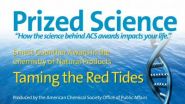(Press-News.org) By determining what goes missing in human cells when the gene that is most commonly mutated in pancreatic cancer gets turned on, Johns Hopkins scientists have discovered a potential strategy for therapy.
The production of a particular cluster of genetic snippets known as microRNAs is dramatically reduced in human pancreatic tumor cells compared to healthy tissue, the researchers report in a study published Dec. 15 in Genes and Development. When the team restored this tiny regulator, called miR-143/145, back to normal levels in human pancreatic cancer cells, those cells lost their ability to form tumors.
"Our finding that these specific microRNAs are downstream of the most important oncogene in pancreatic cancer sets the stage for developing methods to deliver them to tumors," says Josh Mendell, M.D., Ph.D., an associate professor in the McKusick-Nathans Institute of Genetic Medicine, Johns Hopkins University School of Medicine, and an early career scientist of the Howard Hughes Medical Institute. "When we restore microRNAs to cancer cells in which their levels are repressed, the cells no longer are tumorigenic. We have every reason to believe that the efficient delivery of miR-143/145, if achievable, would be therapeutically beneficial."
The team focused its investigation on KRAS, a member of the important RAS family of oncogenes that is mutated in almost all cases of the most common form of pancreatic cancer.
The researchers conducted their studies in a multitude of model systems — human cells growing in culture as well as those harvested directly from tumors, and also in mice and zebrafish. First, using cell lines derived from pancreatic tumors and growing in culture, they added gene products such as mutant KRAS and an inhibitor of mutant KRAS, and then measured the microRNA responses. Next, they conducted the same experiments using cells from patients' pancreatic tumors. Finally, they looked at pancreatic tissue from mice and zebrafish to see what happened when KRAS was activated.
Every time, the team noted the same robust findings. When KRAS was activated, the microRNA cluster miR-143/145 was powerfully repressed, to a fraction of the levels in normal, non-cancerous cells. Restoring the expression of miR-143/145 back to the level of normal cells was sufficient to confer "a very striking change in behavior of those cells," Mendell says. When human pancreatic cancer cells with low microRNA levels were injected into mice, they formed tumors within 30 days. However, when the team restored the levels of microRNAs to the levels of normal cells and injected them into mice, tumors failed to form.
"Our findings showed that repression of the miR-143/145 microRNA cluster is a very important component of the tumor-promoting cellular program that is activated when KRAS is mutated in cancer cells," says Oliver Kent, a postdoctoral fellow in the Mendell laboratory and first author on the paper.
At some point in the process of a normal cell evolving into a tumor cell, it loses microRNAs. When the KRAS gene is mutated — a common event in pancreatic cancer — it somehow purges cells of miR-143/145, the cluster of microRNAs that normally put the brakes on tumorigenesis.
"It is likely that some microRNAs will have very broad antitumorigenic effects in many different types of cancers," says Mendell, whose lab is building animal models to investigate how different microRNAs participate in different tumor types. "In fact, there is already evidence that miR-143/145 can suppress other types of tumors such as colon and prostate cancer. On the other hand, the effects of some microRNAs will likely be very tumor-specific."
Merely 22 nucleotides in length, microRNAs are enigmatic bits of genetic material that, despite being pint-sized, apparently are mighty. This field of study is less than a decade old; scientists still don't have a good grasp on the fundamental role of microRNAs in normal biology.
"We need a better understanding of their basic functions to more fully understand how microRNAs participate in diseases," Mendell says.
Having studied microRNAs in the context of several types of cancer, Mendell says delivery remains a major issue for nucleic acid-based therapies.
"There is a lot of work going on to develop ways to deliver microRNAs to different tissue sites," Mendell says. "I'm optimistic that the liver and even the pancreas will become accessible to these types of therapies and benefit from them."
INFORMATION:
In addition to Joshua Mendell and Oliver Kent, authors of the paper are Raghu R. Chivukula, Michael Mullendore, Erik A. Wentzel, Georg Feldmann, Kwang H. Lee, Shu Liu, Steven D. Leach and Anirban Maitra, all of Johns Hopkins.
The research was supported by the Howard Hughes Medical Institute, the Lustgarten Foundation for Pancreatic Research, the Sol Goldman Center for Pancreatic Cancer Research, the Michael Rolfe Foundation for Pancreatic Research and the National Institutes of Health.
On the Web:
Joshua Mendell discusses microRNA therapy for pancreatic cancer:
http://www.youtube.com/watch?v=rUGkGsABmcc
Mendell lab: http://www.hopkinsmedicine.org/geneticmedicine/people/faculty/mendell.html
Genes and Development: http://genesdev.cshlp.org/
In a proof of principal study in mice, scientists at Johns Hopkins and the Virginia Commonwealth University (VCU) have shown that a set of genetic instructions encased in a nanoparticle can be used as an "ignition switch" to rev up gene activity that aids cancer detection and treatment.
The switch, called a promoter, is a set of chemical letters that interacts with DNA to turn on gene activity. In this case, the scientists used a promoter called PEG-Prom, cloned by VCU researcher Paul Fisher, Ph.D. PEG-Prom is activated only when inside cancer cells, not in normal ones.
"With ...
Athens, Ga. – University of Georgia researchers have developed a technique that can diagnose a common type of pneumonia within minutes, potentially replacing existing tests that can take several days for results.
The researchers, whose findings are detailed online in the journal PLoS ONE, detected Mycoplasma pneumoniae, which causes atypical or "walking pneumonia," in true clinical samples with over 97 percent accuracy using a recently-developed nanotechnology-based platform.
"If you can make a positive identification from a 10-minute test, then appropriate antibiotics ...
People who watch funny videos on the internet at work aren't necessarily wasting time. They may be taking advantage of the latest psychological science—putting themselves in a good mood so they can think more creatively.
"Generally, positive mood has been found to enhance creative problem solving and flexible yet careful thinking," says Ruby Nadler, a graduate student at the University of Western Ontario. She and colleagues Rahel Rabi and John Paul Minda carried out a new study published in Psychological Science, a journal of the Association for Psychological Science. ...
HOUSTON - The recently identified TRIM24 protein plays an active role in pushing normal breast cells into rapid cell proliferation and, potentially, into breast cancer.
Reporting in the journal Nature, a team led by researchers at The University of Texas MD Anderson Cancer Center found that TRIM24 (tripartite motif-containing 24) pushes estrogen-responsive genes toward active expression. This expression, in turn, sets the stage for malignant transformation of breast cells. TRIM24 functions by reading a specific code, or signature, present at estrogen-regulated genes and ...
Rising concentrations of zinc in a waterway on Colorado's Western Slope may be the result of climate change that is affecting the timing of annual snowmelt, says a new study led by the University of Colorado at Boulder.
The study focused on the Snake River watershed just west of the Continental Divide near Keystone, Colo., where CU-Boulder researchers have observed a four-fold increase in dissolved zinc over the last 30 years during the lowest water flow months, said Caitlin Crouch. Crouch, a master's degree student who led the study, said the high levels of zinc affect ...
A new study from researchers at North Carolina State University sheds light on how a technique that is commonly used for making single-metal nanoparticles can be extended to create nanoparticles consisting of two metals – and that have tunable properties. The study also provides insight into the optical properties of some of these nanoparticles.
Tuning the optical properties of nanoparticles is of interest for applications such as security technology, and for use in making chemical reactions more efficient – which has multiple industrial and environmental applications. ...
WASHINGTON, Dec. 15, 2010 — The quest to cure a terrible form of food poisoning caused by population explosions of algae that stain the water red and produce a potent toxin is the topic of a new episode in the American Chemical Society (ACS) Prized Science video series.
Entitled "Taming the Red Tides," the high-definition video, released today, focuses on Michael Crimmins, Ph.D., winner of the 2010 Ernest Guenther Award in the Chemistry of Natural Products. Crimmins, a chemist at the University of North Carolina in Chapel Hill, studies brevetoxin A, a poison produced ...
Findings from a new study of 141 adults add to an ongoing medical debate over which patients with symptoms of celiac disease should go on a gluten-free diet. Published in ACS' Journal of Proteome Research, the study concludes that people currently diagnosed as "potential" celiac disease patients and not advised to follow a gluten-free diet may not be "potential" patients at all. Rather, the scientists found that these patients have the same distinctive metabolic fingerprint as patients with full-blown disease who do benefit from gluten-free diets.
In the study, Ivano ...
In a study that the authors describe as lending credence to the idiom, "by the skin of your teeth," scientists are reporting that the protective shield fluoride forms on teeth is up to 100 times thinner than previously believed. It raises questions about how this renowned cavity-fighter really works and could lead to better ways of protecting teeth from decay, the scientists suggest. Their study appears in ACS' journal Langmuir.
Frank Müller and colleagues point out that tooth decay is a major public health problem worldwide. In the United States alone, consumers spend ...
Manufacturer recalls of toys, promotional drinking glasses, and other children's products constitute an ongoing "toxic toys crisis" that requires banning potentially harmful ingredients in these products and other changes in policy and practices. That's the conclusion of a new analysis in ACS' journal Environmental Science & Technology.
Monica Becker, Sally Edwards and Rachel Massey note that in June the United States government recalled 12 million promotional drinking glasses sold at a fast-food restaurant chain because the painted coating contained cadmium, a toxic ...


